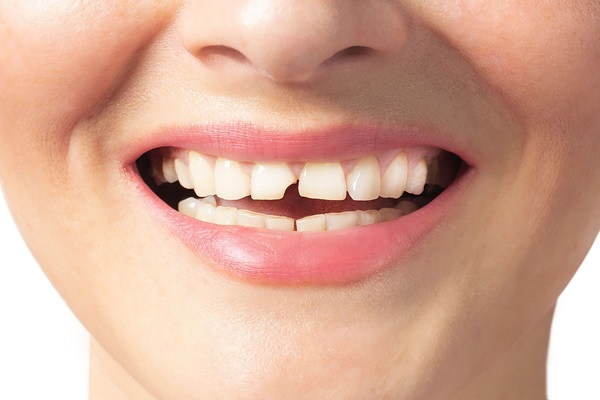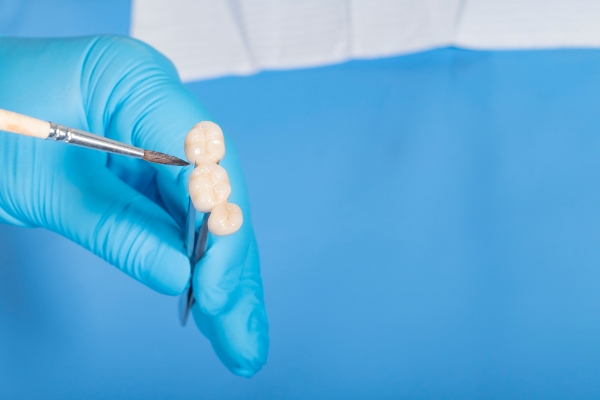VeneersSaratoga Springs, NY
Dental veneers are one of many cosmetic dentistry treatments available to individuals with imperfections in their teeth. They are a versatile treatment used to cover stains, chips and cracks. Many cosmetic dentists are using them to address minor misalignments or teeth that are too short in length. Keep reading to find out more about dental veneers!
Dental veneers
The following information on dental veneers is intended to help individuals who are considering their cosmetic treatment options.
Addressing cosmetic issues
Dental veneers are commonly used to address cosmetic problems with front teeth. Cosmetic concerns may include stains, yellowing, chips, cracks or misalignments.
Stains and yellowing do not always respond to teeth whitening agents, which is why a cosmetic dentist may recommend veneers. Additionally, cracks or chips often occur in the front teeth because they are the most vulnerable to injury. Dental crowns cannot be placed on front teeth, which results in a need for a veneer. Lastly, teeth that do not align with their surroundings may not always require orthodontic attention. In some cases, a dental veneer can be placed to lengthen a tooth or make it more even with the surrounding surface of the adjacent teeth.
Individuals who have any of these cosmetic concerns are likely good candidates for the procedure. However, it is ultimately up to the dentist to decide what procedure is best. Generally speaking, dental veneers can be applied to just about anyone's teeth, so long as there is a reason that they are needed or desired.
The dental veneers process
- A consultation is done in order to determine the individual's goals, desires and needs
- The natural teeth are cleaned and shaved down in order to prepare for the placement of the veneers
- Using a dental instrument, the cosmetic dentist will etch the surface of the teeth to ensure that the composite resin sticks appropriately
- Composite resin is applied to each tooth requiring a dental veneer
- The dentist carefully attaches the dental veneer to the front of the tooth, using dental instruments to shape and seal
- Lastly, any necessary adjustments will be made to ensure that the fit is snug and precise
The benefits
While newer to dentistry, veneers have proven to be beneficial for various reasons. For example, the makeup of dental veneers relies on porcelain, which is a strong material that is known to last upward of 10 years. Another benefit is that veneers look natural! It is next to impossible for the average person to detect veneers, as they appear and function like the surfaces of natural teeth. Aside from their appearance, dental veneers also keep the natural tooth intact. Instead of requiring extraction, such as is the case with dental implants, veneers are just simply secured to the front of the natural tooth. This prevents bone atrophy or jaw deterioration.
The effect on natural teeth
When considering dental veneers to address cosmetic issues, it is also good to be aware of what the procedure entails. While these small shell coverings can do wonders for teeth that are imperfect, most patients are surprised to learn that their natural teeth have to be shaved down in order for placement to take place.
Because dental veneers are custom-created for each tooth, the dentist is required to place them appropriately, which requires enamel shaving and bonding. In order for the veneer to fit perfectly, the tooth has to be cut down quite a bit so the surface still remains in line with the adjacent teeth.
The process of shaving down the natural tooth can cause sensitivity for a short period of time after the veneers are placed. However, dentists can prescribe a special kind of toothpaste or mouthwash to combat sensitivity. Additionally, because the natural tooth is shaved down, it is necessary to understand that there is no turning back. Once a tooth has been altered in such a manner, a dental veneer or other restoration will have to remain on it forever.
The nature of a dental veneer
One thing to keep in mind is that because dental veneers are made of porcelain, they cannot be whitened. However, they can get stained, which results in discolored veneers over time, with no way to whiten them, other than being replaced. Individuals who are concerned about the shade of their teeth may want to consider alternative options.
Making veneers last
When it comes to making dental veneers last, there are a few things that individuals can do. First and foremost, it is highly recommended to avoid foods that are sticky, chewy, hard or tough to consume. These foods can result in dislodgement of the veneer, which can cause discomfort and/or damage to the natural tooth.
Additionally, cosmetic dentists advise against excessively consuming beverages that are heavily dyed. For example, red wines, teas and coffees all cause staining, which can be permanent in the case of veneers, as they cannot be whitened.
Another way to make dental veneers last is to practice good oral hygiene. Many people think that veneers do not require as much attention because they are not the natural tooth, but this is far from the truth. Veneers protect the surface of the tooth only. This means that the gum lines, spaces between the teeth and even the underside are still prone to bacterial build-up, resulting in cavities or gum disease. Practicing good oral hygiene is essential, regardless if dental veneers are present.
Lastly, visiting the dentist on a regular basis will help ensure that dental veneers last as long as possible. Dentists are trained to detect any abnormalities. If caught early enough, then a preventive solution may be able to be applied, thus preventing long-term or serious damage.
Contact Us
My Saratoga Dentist PLLC is located at
569 N. Broadway
Saratoga Springs,
NY
12866





